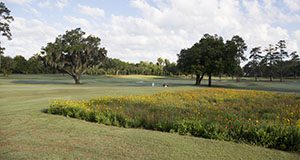Habitat loss from urbanization and agricultural intensification is reducing native bee and monarch butterfly populations, but golf courses in urban areas present an opportunity to mitigate the negative effects of urbanization on pollinators and the environment. It is feasible to enhance a golf course’s ability to support more species and a greater abundance of wildlife by planting the 40% to 70% of acreage not used for the game of golf in wildflowers. With the most golf courses of any US state, Florida is poised to set the stage for golf course environmental stewardship. This 8-page fact sheet written by Rebecca Nestle, Grace Cope, Nicole Benda, and Adam G. Dale and published by the UF/IFAS Entomology and Nematology Department is intended to provide guidelines for Florida golf course superintendents to aid in their efforts to conserve important wildlife while reducing maintenance inputs and associated costs.
https://edis.ifas.ufl.edu/in1316
Tag: Nicole Benda
Managing Insecticide and Miticide Resistance in Florida Landscapes
Resistance to insecticide or miticide is a worry for landscape managers. Around the world, chinch bugs, leafminers, and other insect and mite pests have become resistant to dozens of insecticides, but with diligent insecticide resistance management, we can still maintain long-term effective chemical control. With few new modes of action coming onto the market, landscape managers need to be good stewards of existing products. Ultimately, resistance management means reducing exposure of pests to any one pesticide. Fortunately, there are many ways to prevent resistance and still control pests of ornamental plants and lawns, and this 6-page fact sheet written by Nicole Benda and Adam Dale and published by the UF/IFAS Entomology and Nematology Department explains how.
http://edis.ifas.ufl.edu/in714

